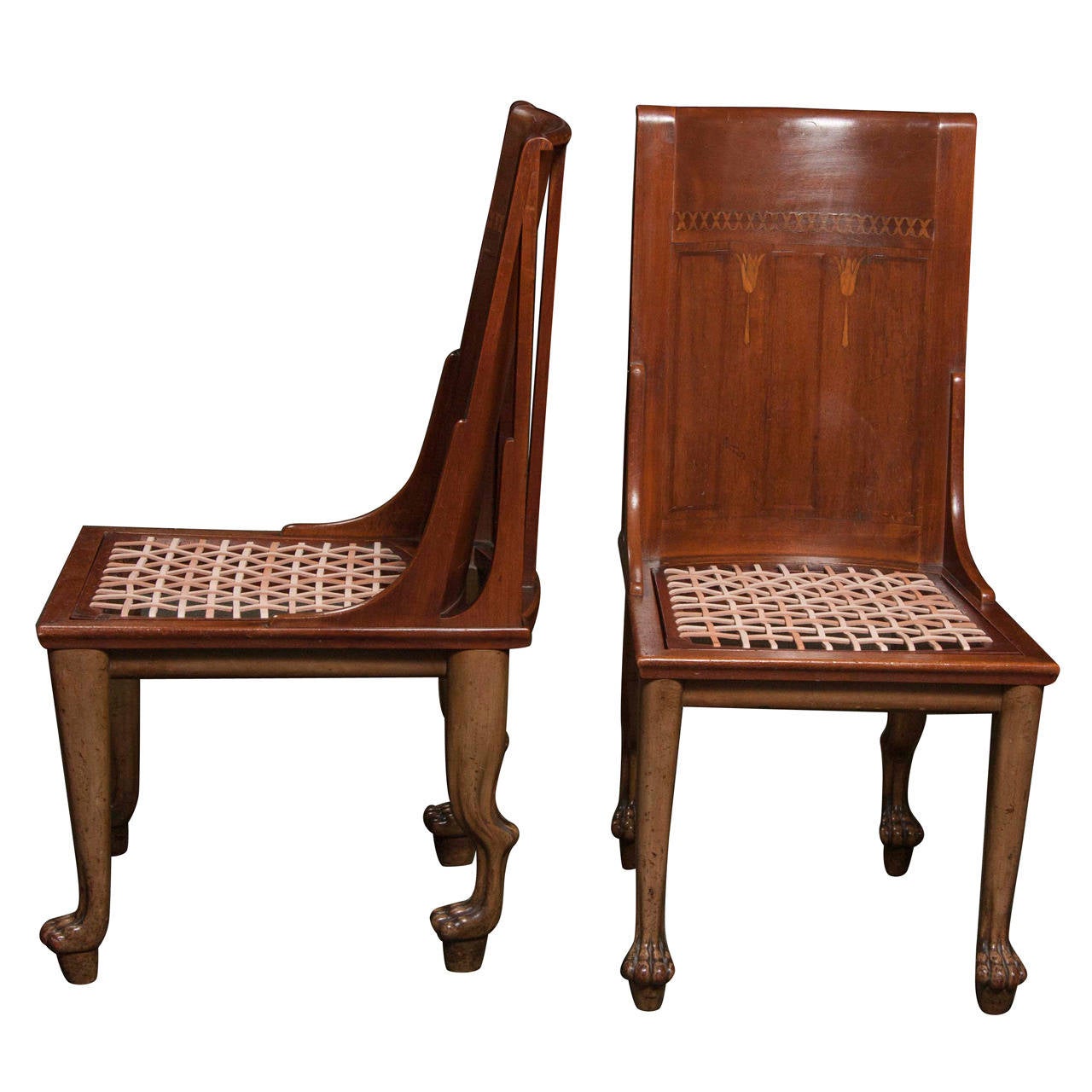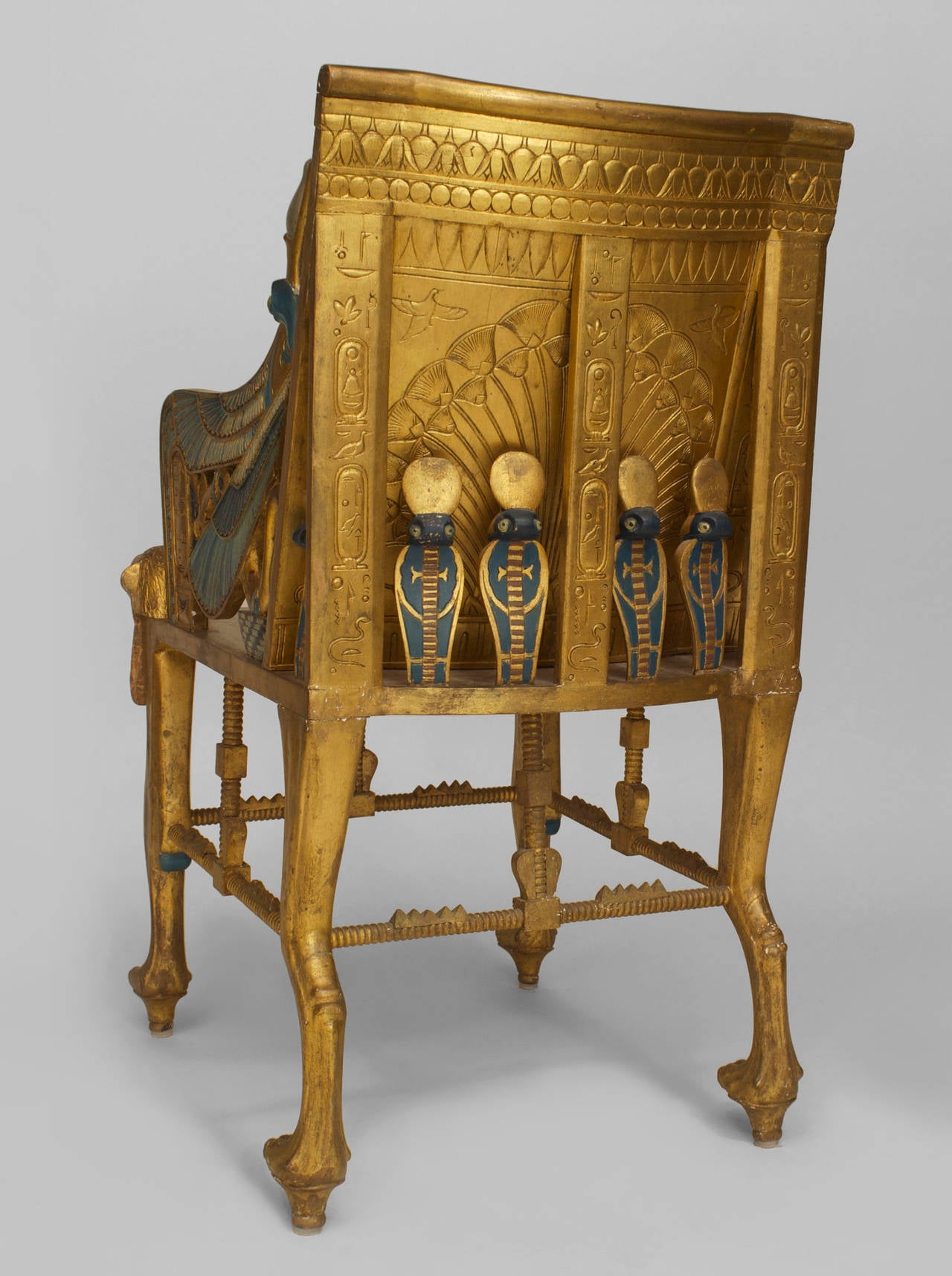

The plinth of this table is decorated with scrolling anthemions (a motif based on the honeysuckle flower), which imitate the designs used on ancient Etruscan vases. Mahogany, inlaid with ebony and silver, and carved in relief. It is in this vein that we meet with the elegant and slender lines of Greek couches, and the beauty of the Greek kline chair. For Thomas Hope, it seems apparent, this was not enough his designs were, where possible, actual copies of antique Greek and Roman furniture.

Furniture design came to be greatly simplified and the designers of the time such as Robert Adam, George Hepplewhite, and Thomas Sheraton used the heritage of antique furniture as inspiration for their designs. In the late Georgian era the neoclassical furniture style arose. Hope was a rigorous designer, he insisted that furniture be based on historically and archaeologically correct foundations, and that the examples of ancient Egyptian and Greek furniture that had survived, whether in concrete form, or as pictured in wall or vase decoration, were the ideal starting, and finishing, points to guide the hand of the designer. Other Hope works included tomes on philosophy and architecture which he kept up production of until his demise in 1831.

A man of many talents Hope, in 1819, produces a best-selling literary novel, "Anastasius or Memoirs of a Greek written at the close of the Eighteenth Century". 1809 sees two volumes of "Costumes of the Ancients", and in 1812 "Designs of Modern Costume" comes along. Publicationsīy 1800 Hope had cemented his role as a fashionable man about town by being elected to the Society of Diletanti and in 1804 embarked on a publishing career with his "Observations on the Plans and Elevations designed by James Wyatt, Architects, for Downing College, Cambridge" in which he made the case for use of the Greek Doric style over the Roman version.Ĭover of "Household Furniture and Decoration"ġ807 saw the printing of his " Household Furniture and Decoration", this work firmly placing him as the most influential arbiter of style of the early 19th century.

Later Hope was to reside in Deepdene, Surrey, in 1807, the place that is most associated with his name. The house spoken of was likely in Duchess Street, London, a house built by Robert Adam in the 1770s. He is a great traveller and collector at any expense of virtue of all sorts.and has furnished his magnificent house.with a profusion of those things. To quote a contemporary, Hope was : said to be the richest, but undoubtedly far from the most agreeable man in Europe. Never one to stay put long Hope was soon travelling again, in 1799 he revisits old haunts in Athens, and in 1802 he is seen in Naples and Rome, all the while collecting antique specimens of art which he later decides to house permanently in England. In his youth he spent seven years travelling about Greece and other drenched-in-history Mediterranean spots and there acquired a taste for Greek art and architecture which he brought to London in 1796, settling there to escape the French invasion of Holland. Son of a rich banking family Thomas Hope was born in 1769 in Amsterdam. Hope's furniture is not for those seeking cosy comfort, perhaps, but it is graceful, and decorative. Thomas Hope, a "gentleman of sofas", as Byron called him, had an enormous impact on the course of English furniture history, mainly in the time of Regency furniture, moving into a decidedly antique direction, focusing it onto a cold, precise, archaeological interpretation of furniture design.


 0 kommentar(er)
0 kommentar(er)
